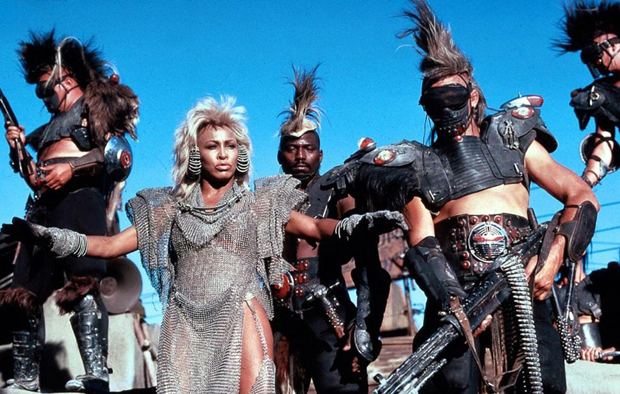The simple, beautiful publishing service was one of the first to defeat vowels in tech company names. Now it's gunning for anything called a "blog." The "Ablogalypse" is nigh, and Tumblr is the format's Mad Max.

Time to start stocking up on canned goods and bandwidth, bloggers.
Earlier this week, xkcd posted a very telling web comic called “Ablogalypse.” It visualized seven years' worth of Google Trends statistics for the words, “Blog,” “Tumblr,” “WordPress,” and “Livejournal” (never forget!). According to the graph, if the trends bear out, “Tumblr” will actually eclipse “Blog” in Google popularity as early as this October.
This changing-of-the-guard is partly due to Tumblr’s rise in popularity last year when its audience grew from 18.6 million to 44 million. And these aren’t all bedroom GIF makers either--everyone from pop stars like Beyonce to gray-bearded institutions like the New York Times has a Tumblr.
Now, the site is adjusting its strategy to meet the demands of increased visibility and legitimacy. For years, it operated like most tech companies, providing a platform and support but leaving the content creation to its users. But all that changed back in January when Tumblr began advertising for an in-house editorial staff tasked with creating original content and curating the best of what its users had to offer. This week, that effort came to life with the launch of an editorial blog dedicated to “stories and features in progress from this new and still secretive organization.”
So far, the curated elements of the blog are appropriately scattershot, just like Tumblr itself. A video of a Pomeranian mingles with a photo taken at the Los Angeles County Museum of Art. There’s also a picture from inside the New York Times’ photo archive, perhaps an early gesture at Tumblr's journalistic ambitions. Meanwhile, the blog’s mascot, a cartoon cat, sits ceremoniously atop the blog, overseeing the posts and ensuring that the tone stays light.
But the new blog does more than simply cherry-pick the best content, a task Tumblr has engaged in for over a year by way of unpaid volunteer curators. It also solicits and showcases stories from its users about how Tumblr changed their lives. Sure, part of the intent behind this feature, known as #Storyboard, is likely the great free PR it creates. But more significantly, #Storyboard encourages people to use Tumblr as a storytelling tool, and not just a repository of cool stuff they found on the web. Suddenly the idea of Tumblr taking over the online real estate historically dominated by non-Tumblr blogs doesn’t seem so outlandish. And with its handy “reblogging” share tool, Tumblr is far better suited to the social web than publishing platforms like WordPress ever were.
As Fast Company’s Neal Ungerleider noted back in January, Tumblr’s quest for publishing dominance won’t be easy. Unlike Facebook and YouTube, Tumblr has done little to stop the spread of pornographic material on its subdomains (then again, BuzzFeed has yet to remove posts like (NSFW) “The 11 Best/Worst Vagina Tattoos Of All Time,” and that hasn’t stopped it from becoming a legitimate breaking news source). Other concerns cited by Ungerleider include frequent service outages and spam attacks.
Tumblr’s editor-in-chief Chris Mohney tells Fast Company that they’re keeping quiet on the details of the editorial blog and the #Storyboard tag until next month when the editorial arm gets a more official launch. At that time, we’ll know more about whether Tumblr is merely dipping its toes in the waters of content creation, or if it’s aiming to become the latest experiment in what a 21st-century news/media site looks like, in the tradition of Facebook, Huffington Post, and BuzzFeed. Either way, the future looks bright for consumers who like their hard-hitting journalism and their cat GIFs on the same page.